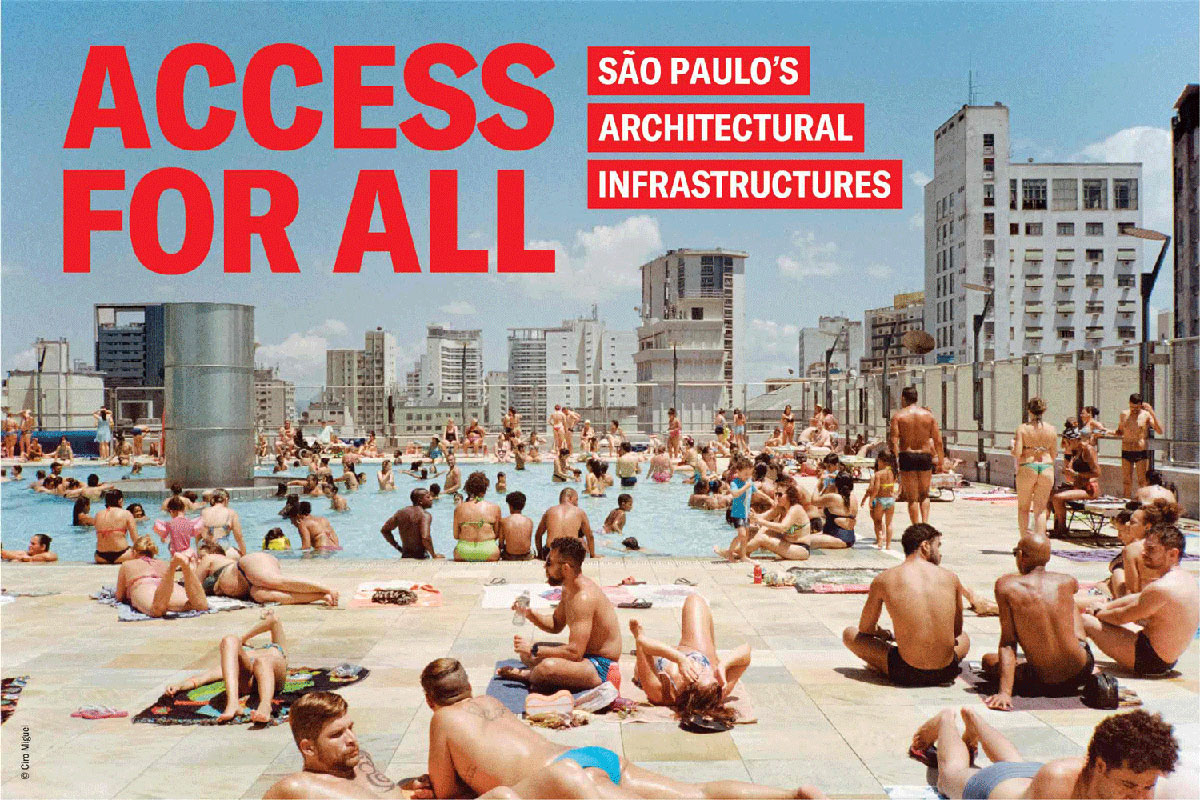For decades São Paulo has seen investments in architecture that help alleviate the lack of public space in the city. Many of these projects also provide São Paulo’s 12 million inhabitants with access to recreational, cultural, and athletic programs, much-needed in this dense metropolis of tremendous inequality, high crime rates, congested traffic, and severe public health issues. Access for All presents a selection of these projects, built from the 1950s to the present, organized in three categories: large-scale, multi-programmatic projects; open public spaces; and projects located along the city’s iconic Paulista Avenue.
The projects, from Lina Bo Bardi’s SESC Pompéia to Andrade Morettin’s Instituto Moreira Salles, weave in and out of the city, blurring the boundaries between buildings and the public realm of the street through the use of internal alleys, ramps, stairs, and elevated or sunken plazas. With a focus on how architecture can serve residents, Access for All highlights how these projects are used today, rather than their formal characteristics. Regardless of when they were constructed, the projects are analyzed as they stand, through newly commissioned photographs, films, architectural drawings, illustrations, models, and interviews, as well as archival documents.
This exhibition was originally presented at Architekturmuseum Der Tum.








